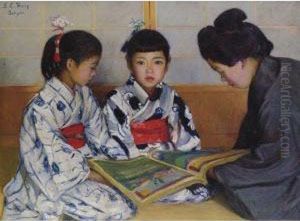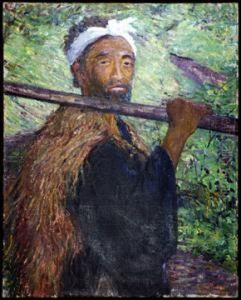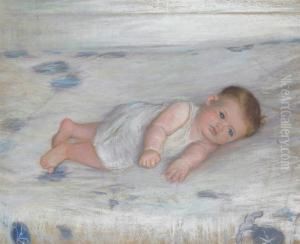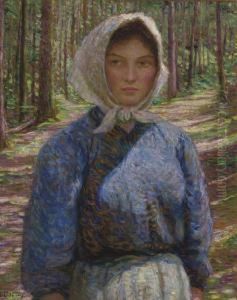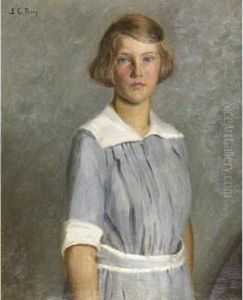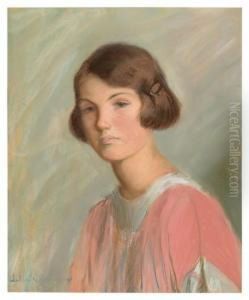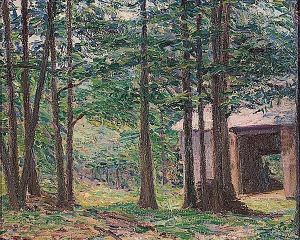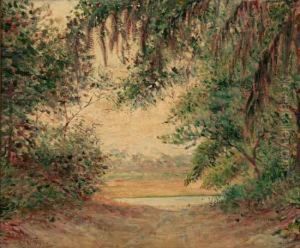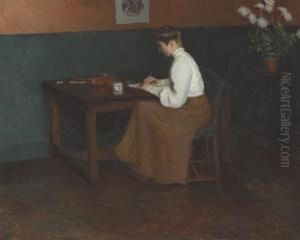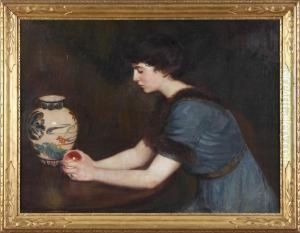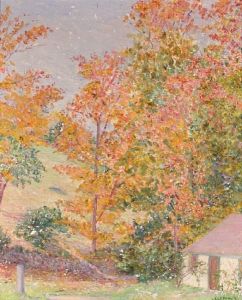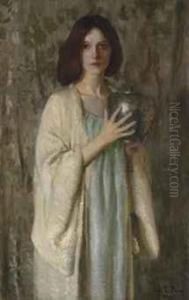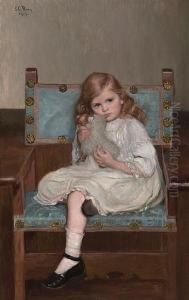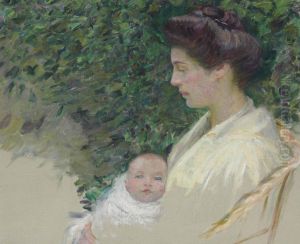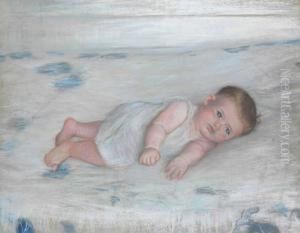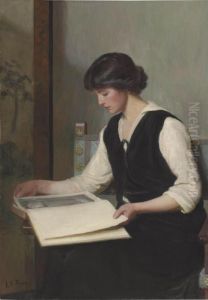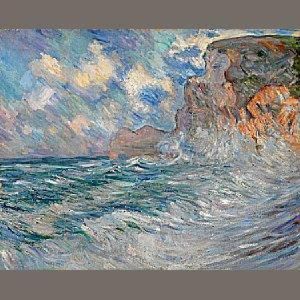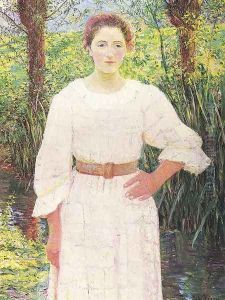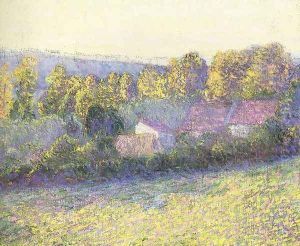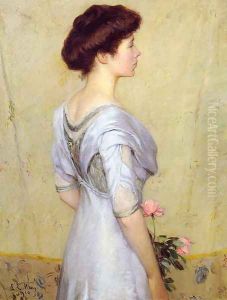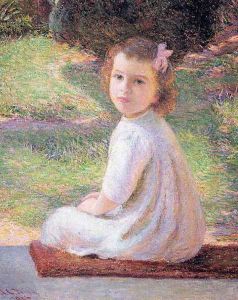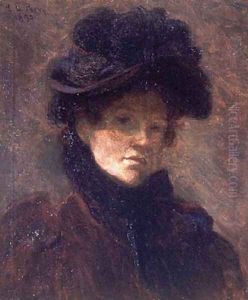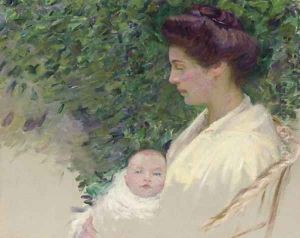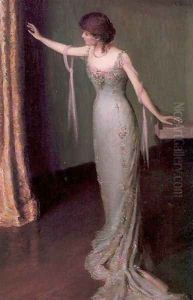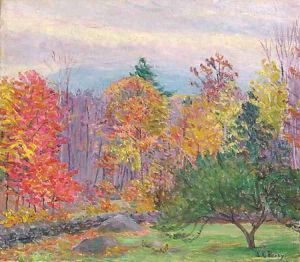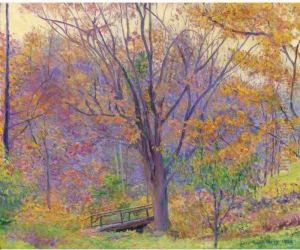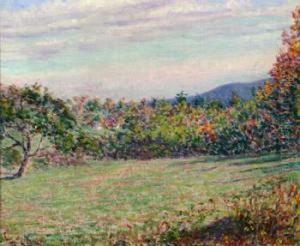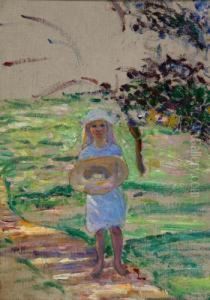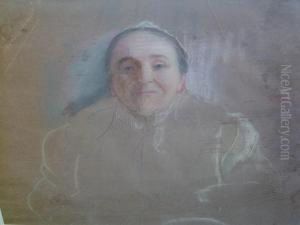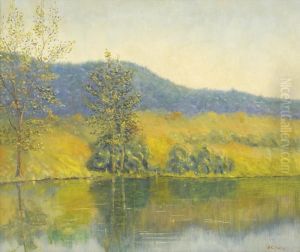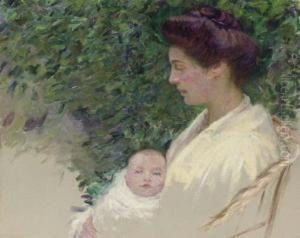Lilla Calbot Perry Paintings
Lilla Cabot Perry was an American artist who played a significant role in introducing American audiences to Impressionism. Born on January 13, 1848, in Boston, Massachusetts, Perry was part of a socially prominent family with strong ties to the Boston literary and cultural community.
Perry received her initial artistic training in Boston and later traveled extensively in Europe, where she developed a keen interest in Impressionist painting. Her style evolved significantly after she moved to France with her family in 1887. There, she became acquainted with Claude Monet, whose work and Impressionist technique had a profound influence on her style. She spent several summers in Giverny, Monet's home village, which was a gathering place for American expatriate artists at that time.
Perry's work often featured domestic interiors, landscapes, and portraits. Her use of color and light reflected her Impressionist leanings, though she never fully abandoned the compositional techniques of her academic training. Throughout her career, Perry advocated for the acceptance of Impressionist art in the United States, both through her own work and her influence on other American artists.
After returning to the United States in the early 1890s, Perry continued to paint and exhibit her work. She also became involved in the burgeoning women's suffrage movement, using her social standing and her art to promote the cause.
Lilla Cabot Perry's contribution to American art was recognized during her lifetime, and she enjoyed a successful career. She was featured in numerous solo and group exhibitions, and her work is included in the collections of several major museums. Perry passed away on February 28, 1933, in Hancock, New Hampshire. Today, she is remembered as an important figure in the American Impressionist movement and as an advocate for the role of women in the arts.
